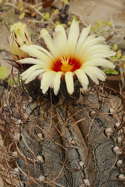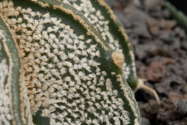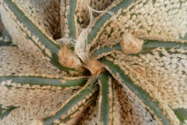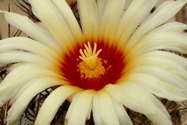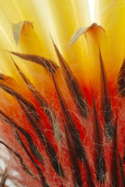By no means uncommon in cultivation, this nevertheless remains one of the choicest of the bishop’s cap cacti, so called for the resemblance of the sharply, seven- to nine-ribbed stems to a bishop’s mitre. Among the desirable features of this species are the epidermal trichomes that cover the stems to varying degrees. These are usually white but when new often have a tawny hue and in the best forms, such as those offered here, almost completely cover the epidermis. Also, the flowers are among the largest of the genus, to 6 cm (2.5") or more in diameter, with matte or satiny-yellow petals, red in the throat. The slender, tortuous, flexible spination that gives the plant its name (Latin capri-, goat; corne, horn) apparently reminded its describer of goat’s horns whether by virtue of texture or color. Perhaps the reason for the species not being more ubiquitous in collections is its sensitivity to water, but given sufficient drainage, these vigorous seedlings should offer many years of satisfying form and flowers. HBG 126024, $6.
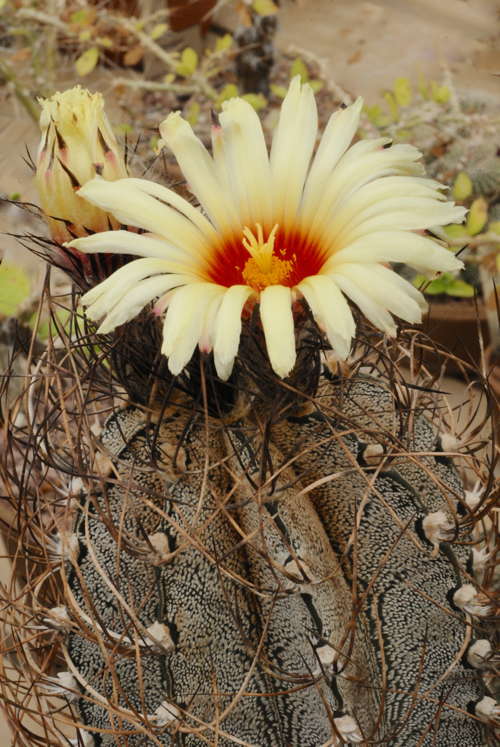
Published in the Cactus and Succulent Journal, Vol. 88 (3), May-June, 2016
